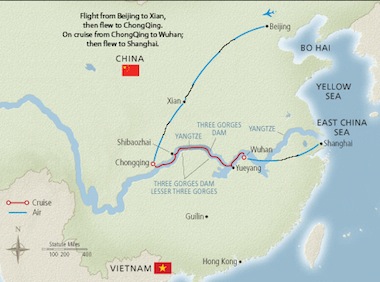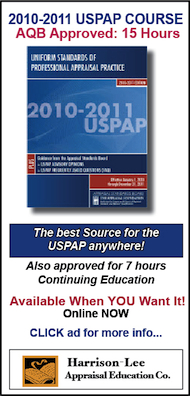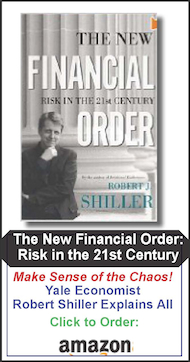Feature Article
01/18/11 Categories: Feature Article
Highlights of Trip to China -- Oct. 21st - Nov. 5th, 2010
by
Henry S Harrison & Ruth Lambert
Recently, we returned from a 17 day trip to China. We have tried to capture in this article some of the highlights of our experience and what we learned about China. The article is divided into two parts. Part 1 summarizes what we saw and learned. Part 2 is a chronological day-by-day description of the trip, with many pictures.
Part 1 - AN OVERVIEW
China is a big country with a land area about the same as the US, with a gigantic population of over 1.3 billion people. Like the US, most of the action is in its coastal cities. Unlike the United States, China has only one coastline, on the East China Sea.

About one in a hundred rural students makes it to a university and even then, they continue to be discriminated against for white collar jobs in the coastal cities, as having peasants as parents is a serious detriment to advancement.
There are about 200 million middle class people — defined as those with disposable income — and 75 million upper class (rich) people in China. This is more well-to-do people than there are in the US. The difference is that with 700 million poor farmers and hundreds of millions of other poor people, it is not going to be easy to for China to substantially improve the economic well-being of the bulk of the nation in the near future.
The cities of Beijing and Shanghai are amazing. Beijing was the site of the 2008 Olympics and Shanghai the site of the 2010 World Expo. Both cities made major modernizations of their infrastructures in anticipation of these events. Visiting them felt like being in the future, especially the new financial district or Pudong section of Shanghai — with more dramatic and bigger skyscrapers than New York City. Most of the skyscrapers were designed by world famous architects and constructed within the past 10 years. The main shopping avenues were more elegant than 5th Avenue in New York. For example, almost every Swiss watch manufacturer had their own store on the famous Nanking Road. The recently opened gigantic Apple store was mobbed, with customers limited to four iPhones each. Every auto manufacturer in the world has a big showroom right downtown (though we saw no outdoor lots).
People in China are not free to move around at will. Their Hukou or permanent resident system ties everyone to the place where they were born. People can move to take jobs on a temporary basis, but they are required to obtain a permit to do so, and it is much more difficult to make a permanent move. This clearly appeared to be an instance where one’s connections and family background made an enormous difference. Upper-middle class people have a much better chance of being “permitted” to move. About 300 million poor people have temporarily moved to where the new factories are, in so-called “instant cities” along the coast. They are better off than the farmers but still live at poverty level or below. In order to house these “migrant workers”, high-rise apartment houses are being built at an astronomic rate. We will describe in Part 2 the 100s of high-rise apartments we saw under construction in just a few cities we visited. China is in the midst of a gigantic building boom with no end in sight. It is funded by the government (using our debt) and driven by almost unlimited need.
The Chinese Communist Party claims to have 76 million members (only 6% of the population) but it still has complete control of the government. It is a hybrid form of government based on the old Soviet Communist model, but now includes a vibrant free enterprise component. According to the Chinese press, about 50 of the largest companies are owned and run by the government. Many other companies are privately owned, both by Chinese nationals and foreign owners, and they have been very important to the rapid growth of the Chinese economy during the past 10 years. In spite of its burgeoning market economy, the government is a one-party dictatorship that suppresses opposition — using censorship, arrests, and economic punishments to discourage and harass dissenters. It is also bureaucratic and corrupt, and routinely overreacts to anything it considers an insult.
Because of our close connections with a Chinese family in the States, we were able to ask people (mostly middle and upper class) why they tolerate this repressive political regime with its censorship, corruption, bureaucracy and general lack of personal freedoms. They replied that during the past 10 years there has been tremendous economic progress, and in order for this to continue, there must be a strong and stable central government. To them, this is more important than a democratic government. Everywhere we went, the slogans on walls, gardens and structures spoke of “harmony, stability and peace” as the main goals of the larger community. The Chinese we met continue to support these goals over personal freedom and free choice, and probably will as long as their own circumstances (and incomes) continue to improve. With such an enormous and disparate population — there are 55 distinct ethnic groups in China today — these precepts appear to be practical in the short term. Only time will tell if they will prove to be useful as the economy continue to expand exponentially.
Our tour, called Imperial Jewels of China, was packaged by Viking Cruise Line. It began in Beijing, included a six day trip on the Yangtze River from ChongQing eastward towards Shanghai, and offered three flights inside China to other key destinations. We traveled to China on Delta Airlines using our points, flying from Kennedy to Beijing, and changing planes in Tokyo. Flying time was about 18 hours, and even in Business Class, it was a bear. We arrived in Beijing about 10:30pm China time. We had arranged airport transfers, and were met at the gate by our hotel staff, whisked off to the commercial district of Beijing, and checked into the magnificent Ritz Carlton Beijing Hotel, completed just two years ago, in time for the 2008 Olympics. The first four days we spent in Beijing, the capital of China, included a side trip to the Great Wall and the Sacred Way of the Ming Dynasty Tombs. We then flew on to Xian, a city to the southwest that was the former capital of China, where the 2,000 year old terra soldiers were recently discovered.
Next, we flew to ChongQing the capital of China during WW II and the home base of the famous Flying Tigers. It is now a provincial capital with a population of 30 million people. Here we boarded our Viking Cruise boat on the Yangtze River for a 6 day, 460 mile river cruise. The first of our daily side trips was to see the Shibaozhai Temple. Next, we changed to a smaller boat and took a sight-seeing tour of the “Lesser Three Gorges”. Back on our main cruise ship, we went through the gigantic five-stage locks of the Three Gorges Dam. The dam spans the Yangtze River, is 600 feet high, and four time longer than the Hoover Dam. An estimated 1.2 million people were moved from the Yangtze river valley where the water level was raised to 175 meters (over 200 feet above its original level) with the construction of the dam. We spent almost a day touring the dam site and its museum.
At Jingzhou, we were bused through the countryside where we viewed many small farms and small farming communities. We visited a grade school subsidized by the Viking Company and sat in and participated in their class work. Next day, we docked at Wuhan, a large city of 10 million people, with over 50 universities, most with 10,000 to 50,000 students.
From there, we flew to Shanghai for our final 4 days in China. Shanghai was definitely our favorite place, being southern in both climate and temperament. The days we spent there were sunny and relatively mild, and the feeling in the city was a vibrant buzz of economic activity combined with a relaxed social life. The buildings both on the Bund and in the new financial district of Pudong were exhilarating, charming and whimsical by turn, as it is clearly an architect’s paradise.
Part 2 describes some of the great physical beauty, thousands of years of history, political and social complexity, cultural endurance, and the stalwart character of the Chinese people, then and now. This trip was a once-in-a-lifetime dream come true for us. We are very glad to have this opportunity to share it with you. Please click on the following link to read Part 2 and enjoy some of our pictures.
Click Here to Read China Part 2
















